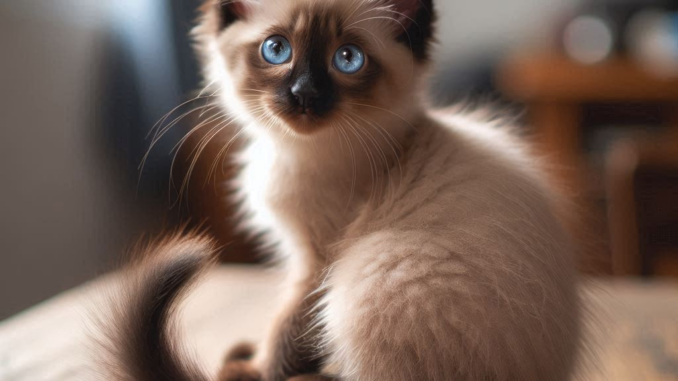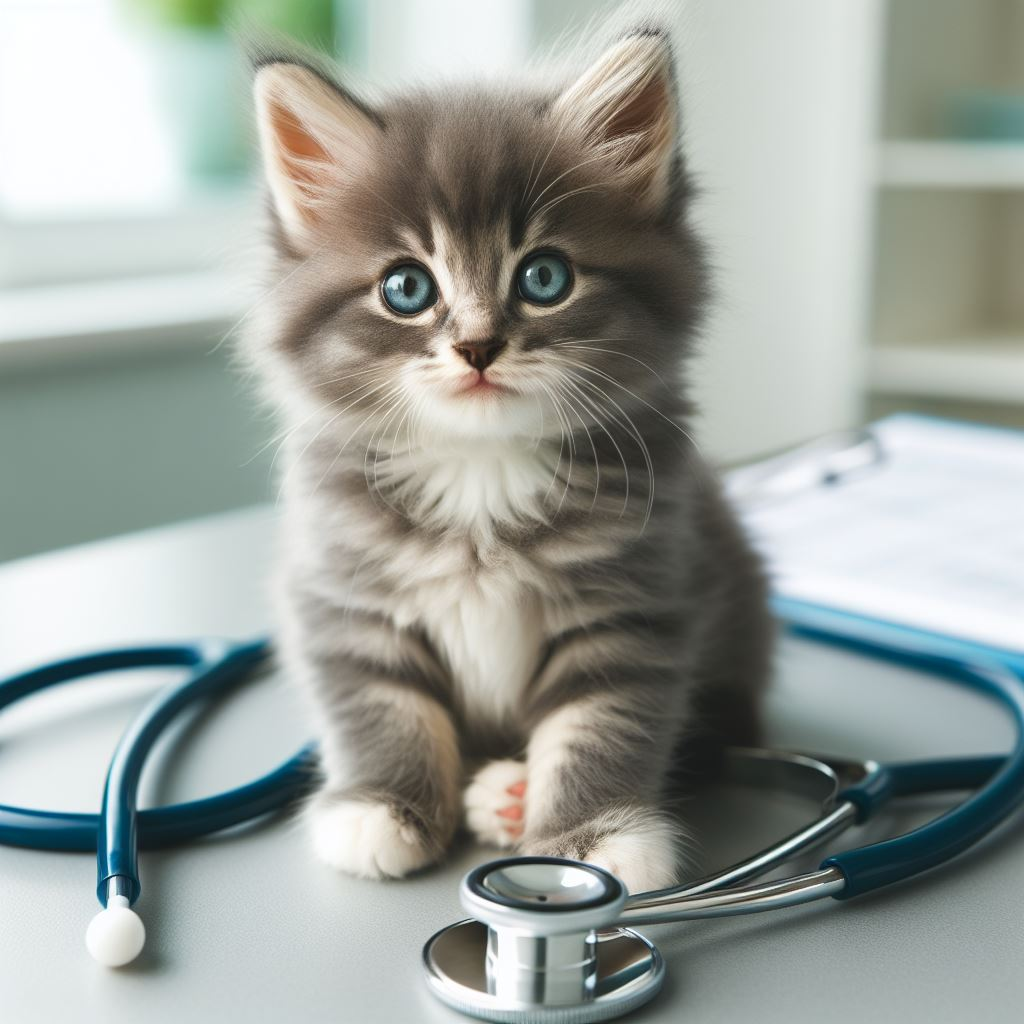
Male Kitten G Spot: What Every Cat Owner Should Know
If you’re a cat owner, you’ve probably noticed that your furry friend has some spots they love to be petted more than others. But did you know that male kittens have a particularly sensitive area that’s often called their “G spot”? In this post, we’ll dive into what this spot is, where it’s located, and why it matters for your kitten’s health and happiness.
Quick Answer
The male kitten “G spot” refers to a sensitive area located just above the base of the tail. When gently touched, it can cause a pleasurable response in many kittens, such as arching their back or raising their tail.
Understanding the Male Kitten G Spot
What Exactly Is It?
Let’s clear up a common misunderstanding right off the bat – the term “G spot” in kittens isn’t the same as what you might have heard about in humans. For our feline friends, it’s simply a way to describe an area that’s extra sensitive to touch.
This spot is located just above where the tail connects to the body. It’s an area rich in nerve endings, which is why many kittens react strongly when it’s touched. Some cat experts believe this sensitivity is linked to the fact that mother cats often lick this area to stimulate kittens to go to the bathroom when they’re very young.
The Science Behind the Sensitivity
The reason this area is so sensitive has to do with cat anatomy. This spot is near several important structures:
- The base of the tail, where many nerves converge
- Scent glands that cats use for marking territory
- Muscles that control tail movement
All these factors combined make this area particularly responsive to touch.
Why It Matters for Cat Owners
Bonding with Your Kitten
Understanding your kitten’s sensitive spots can help you bond with them. Many cats enjoy gentle scratches or pets in this area, which can be a great way to show affection and build trust.
Health Monitoring
Being familiar with this area can also help you spot potential health issues. If your kitten suddenly becomes sensitive or painful in this spot, it could indicate a problem that needs veterinary attention.
A Personal Tale: My Discovery of Max’s Sweet Spot
I remember when I first brought my kitten, Max, home. He was a bundle of energy, always zooming around the house. One day, while giving him a gentle pet, I noticed he arched his back and purred loudly when I scratched just above his tail.
“Oh, you like that, buddy?” I said, amazed at his reaction. From that day on, it became our special bonding time. Max would come running whenever I called his name, knowing he’d get his favorite scratch.
This experience taught me how important it is to pay attention to your pet’s individual preferences and reactions.
How to Properly Pet Your Kitten’s Sensitive Spot
Do’s and Don’ts
- Do start with gentle touches
- Don’t apply too much pressure
- Do watch for signs of enjoyment like purring or arching
- Don’t continue if your kitten seems uncomfortable
- Do combine with other forms of petting and affection
Reading Your Kitten’s Body Language
Cats communicate a lot through body language. Here are some signs that your kitten is enjoying the attention:
- Purring
- Arching their back
- Raising their tail
- Rubbing against your hand
On the flip side, if your kitten moves away, flattens their ears, or swishes their tail rapidly, it’s time to stop.
Common Misconceptions About the Male Kitten G Spot
Myth #1: It’s Only Present in Male Kittens
This is not true! Both male and female kittens have sensitive areas at the base of their tails. The term “G spot” is just a catchy phrase that’s been applied to male kittens, but it’s not scientifically accurate or gender-specific.
Myth #2: All Kittens Love Having This Spot Touched
Just like humans, cats have individual preferences. While many kittens enjoy having this area petted, some may not. Always respect your kitten’s boundaries and pay attention to their reactions.
The Role of the G Spot in Feline Behavior
Scent Marking
The area around the base of the tail contains scent glands that cats use for marking their territory. When you pet this area, you’re not only giving your kitten pleasure but also helping them spread their scent, which can make them feel more secure in their environment.
Social Bonding
In the wild, cats often greet each other by sniffing and rubbing this area. By petting your kitten here, you’re mimicking a natural cat behavior, which can strengthen your bond.
When to Be Concerned: Health Issues Related to the G Spot Area
While the G spot area is usually associated with positive experiences for kittens, it’s important to be aware of potential health issues that could affect this region:
1. Skin Irritations
If you notice redness, swelling, or hair loss in this area, it could be a sign of allergies, flea infestation, or other skin conditions.
2. Tail Pull Injuries
If your kitten’s tail has been pulled or injured, they may show sensitivity in the G spot area. This requires immediate veterinary attention.
3. Anal Gland Problems
While not directly related to the G spot, anal gland issues can cause discomfort in the surrounding area. Signs include scooting, excessive licking, or a foul odor.
The G Spot and Cat Grooming
Understanding the sensitivity of the G spot area can help you make grooming a more pleasant experience for your kitten:
- Start grooming sessions with gentle pets in this area to help your kitten relax
- Be extra gentle when brushing near the base of the tail
- If your kitten enjoys it, end grooming sessions with a nice scratch in the G spot area as a reward
Frequently Asked Questions About the Male Kitten G Spot
Q: At what age do kittens develop sensitivity in this area?
A: Kittens are born with sensitivity in this area, but they may become more responsive to touch as they grow and develop, usually around 4-6 weeks old.
Q: Can petting this area too much cause any problems?
A: While occasional petting is fine, excessive stimulation of any area can lead to overstimulation or skin irritation. Always follow your kitten’s cues.
Q: Is it normal if my kitten doesn’t seem to enjoy being touched in this spot?
A: Yes, every cat is different. Some may not enjoy this type of touch, and that’s perfectly normal. Find other ways to bond with your kitten that they enjoy.
Conclusion: Embracing Your Kitten’s Unique Personality
Understanding the male kitten G spot is just one small part of getting to know your furry friend. Every kitten is unique, with their own likes, dislikes, and quirks. The key is to pay attention, be gentle, and respect your kitten’s boundaries.
Remember, the goal isn’t just to find your kitten’s sweet spots, but to build a loving, trusting relationship. So take the time to observe, learn, and most importantly, enjoy the special bond you share with your feline companion.
Next Steps for Cat Owners
- Spend time each day gently petting and playing with your kitten to strengthen your bond
- Keep an eye on your kitten’s reactions to different types of touch and respect their preferences
- If you notice any unusual sensitivity or changes in behavior, consult with your veterinarian
- Continue learning about cat behavior and care to be the best pet parent you can be
By understanding and respecting your kitten’s sensitive areas, you’re on your way to building a wonderful, lifelong friendship with your feline friend. Happy petting!


Leave a Reply